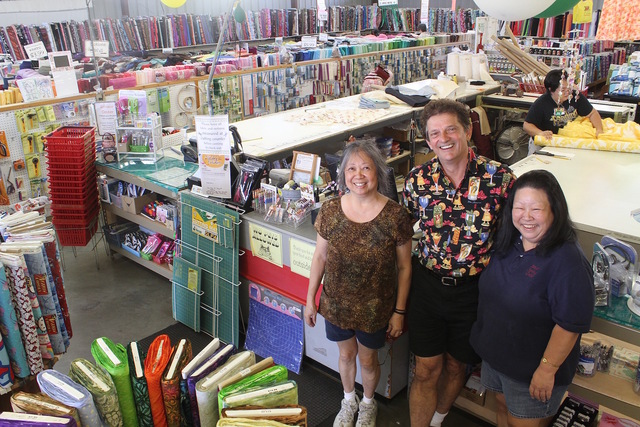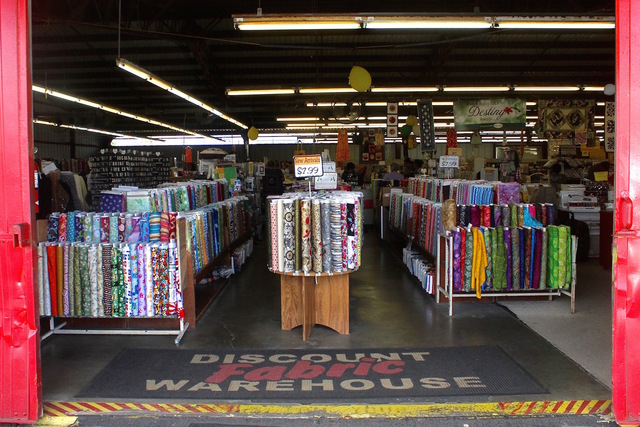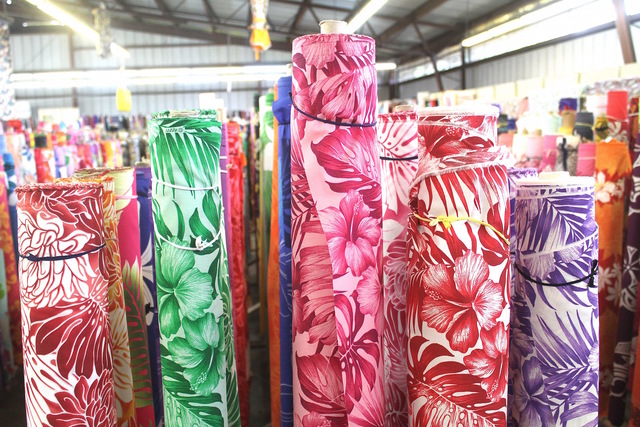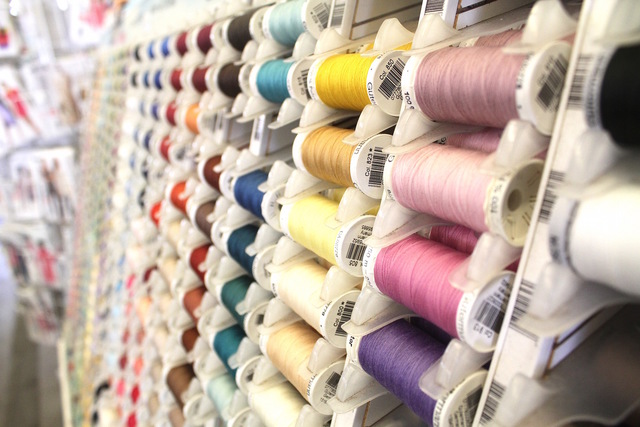Bill Miller remembers a time when people sewed their own prom dresses. It was cheaper that way, and a guarantee that no other girl at prom would have the same outfit.
“Sewing was really more of a necessity,” Miller said in a recent interview. “You did it to save money.”
Miller entered the sewing business more than 30 years ago, as an employee of the old Singer store at the Kaiko‘o Mall in Hilo. With cheap clothing hard to come by on the Big Island, making clothes made economic sense.
These days, with cheap fashion readily available at places like Walmart, the necessity has become more of a pastime. But it’s one that keeps Miller in business: Discount Fabric Warehouse, the store he founded, just celebrated its 20th anniversary. The doors of the Hilo store, the first of four in Miller’s statewide portfolio, opened on June 15, 1995.
The dimensions of the operation have changed since then, from a 300-square-foot space in Ben Franklin to the current 11,000-square-foot showroom on Kanoelehua Avenue. The concept — to provide an all-encompassing sewing store, offering everything from upholstery fabric to embroidery classes — has remained largely the same.
The business had a growth spurt in its early years. Miller opened a store on Kauai just months after Hilo’s opened. A store on Maui opened in 1996, with a Kona branch on its heels.
Managing the rapid growth was a challenge, Miller said, but he’s quick to note that each of the four branches is still thriving.
“I don’t know if this would work everywhere,” he said.
It was in part the downfall of another institution that led to the first Discount Fabric Warehouse opening shop. The Singer Corp. went bankrupt in 1995. Miller had left his job at the mall store six months before and was working as a fabric representative, selling to shops around the state.
After the Singer bankruptcy, Miller ended up taking on sewing machine sales as well. He opened the space inside Ben Franklin, all the while continuing with his fabric job.
Enough people asked if he would open his own fabric store that Miller decided to give it a go, taking out a short-term lease on the Kanoelehua space. In one sense, that was a return to the building’s roots: It’s the original Hilo Hattie’s garment factory.
The plan was to be open on weekends for fabric sales. But weekends quickly turned into six days a week, then seven. The short-term lease became building ownership (the state still owns the land).
Miller has customers who first came in with their parents 20 years ago. They now bring their own children in to shop.
“They come in, and they’re learning to sew, and that’s refreshing,” Miller said. “That means there’s a potential for the business to be here for my children.”
Some of Miller’s most reliable customers are the hula halau. It’s been that way since the store first opened, he said.
“At that point, no one was stocking sufficient yardage to service the halau,” Miller said.
Glenn Kelena Vasconcellos, kumu hula of Halau O Ke Anuenue, used to travel to Honolulu to get the right amount of fabric for his dancers’ outfits. Vasconcellos does the majority of the sewing work himself, with help from his sister.
“It’s a big amount,” he said. “I’m not buying 20, 30 yards. I’m buying 100.”
Vasconcellos typically goes to Miller with an idea in mind for the look he’s trying to create. The two will brainstorm together to get the right type of fabric and what vendors to use.
Miller credits his years as a fabric representative with helping cultivate buying sources and learning the business “from the inside.” Keeping the warehouse full is a year-round endeavor.
“If they (distributors) have something that’s right for Hawaii, and they know it, they call me,” Miller said. “I’m buying all the time because I’m trying to find the right opportunity.”
What’s right for Hawaii? In general, Miller said, it’s bright colors as opposed to dull, and spring palettes as opposed to fall.
His buying practices, particularly for upholstery fabrics, take advantage of major companies’ overstock. If La-Z-Boy finishes up a run of furniture, they have a stockroom full of fabric left over, Miller said. He can buy that stock at a low cost — it’s just a matter of knowing when it’s available.
“You’ve got to buy when the timing is right; you can’t necessarily put it on a list,” he said.
“People do like the bargain nature of it,” he said. “The clientele likes to dig through and look for the lowest priced stuff.”
Cotton prints for quilting are always in stock, but because of the variety of fabrics and accessories the store offers, Miller doesn’t consider Discount Fabric Warehouse a quilt shop.
“My competitors are not the quilt shop up the street,” he said. “My competitors are the other things you could be doing with your time.”
But these days Miller has seen more people interested in hands-on creating. Making custom prom dresses (or aloha shirts, or baby clothes) is back en vogue again, spurred in part, Miller thinks, by TV shows like “Project Runway” and its ilk.
“I think they’ve kind of made sewing cool again, and shown people that it’s OK to maybe take a little risk,” he said.
Still, he says some trends may never come back.
“I can’t remember the last time when somebody asked me how to darn a sock,” Miller said.
Email Ivy Ashe at iashe@hawaiitribune-herald.com.













